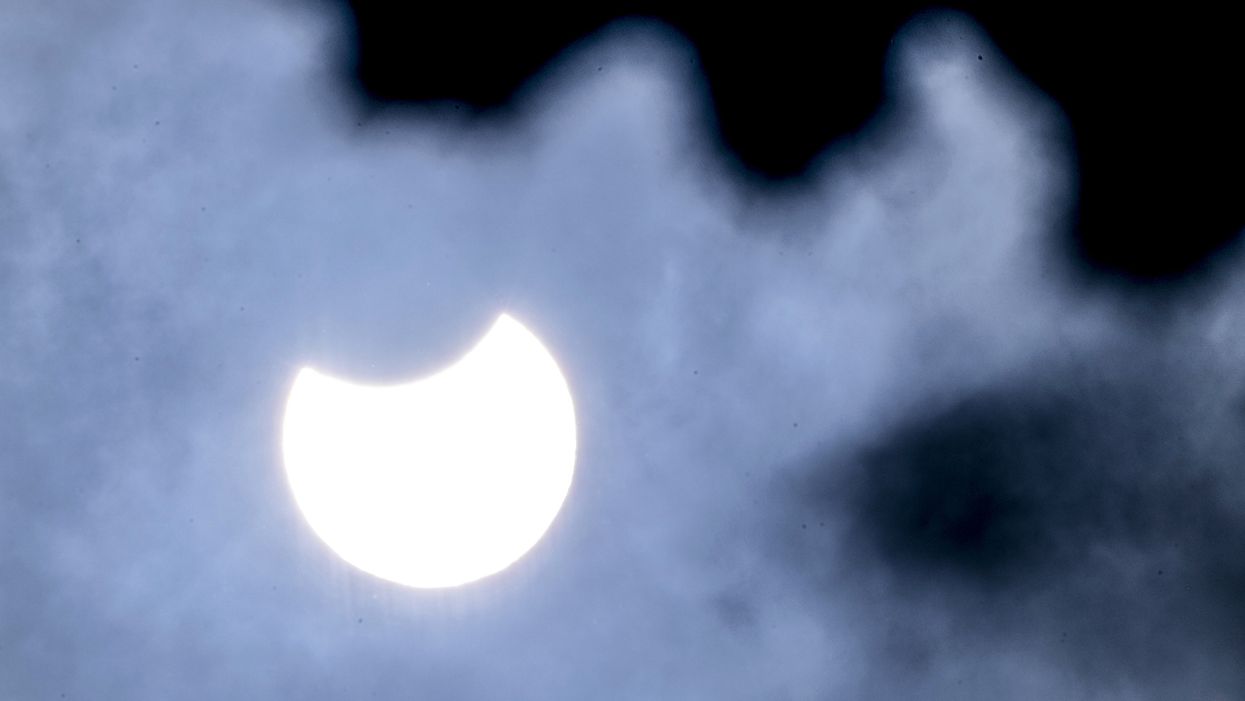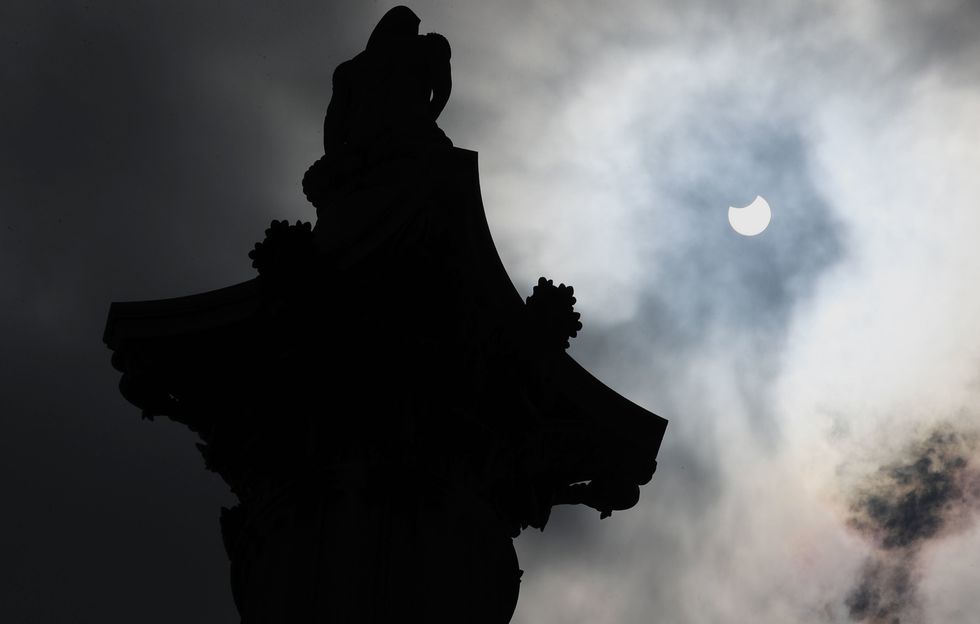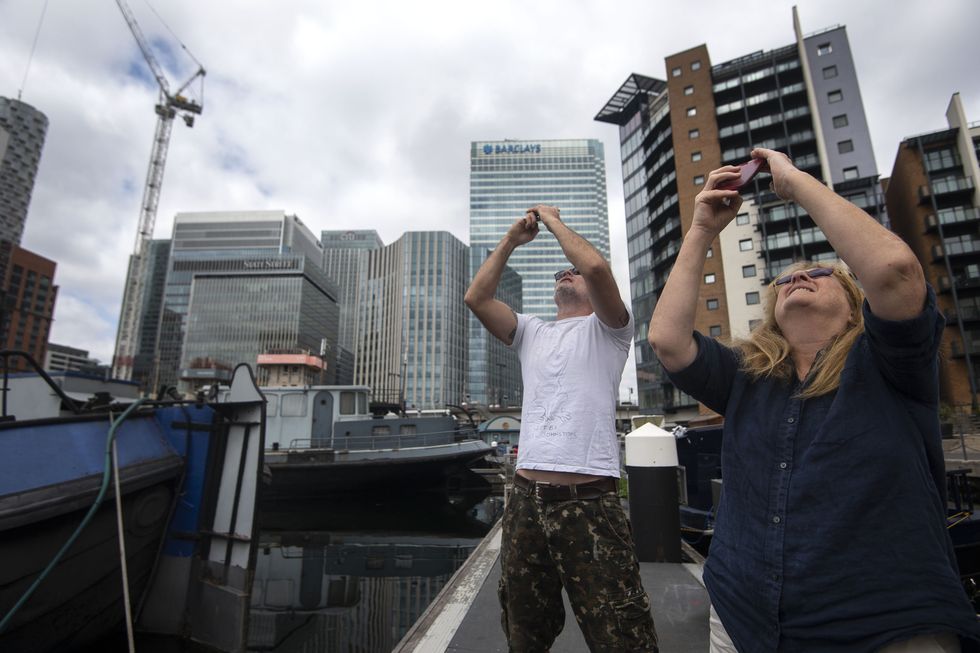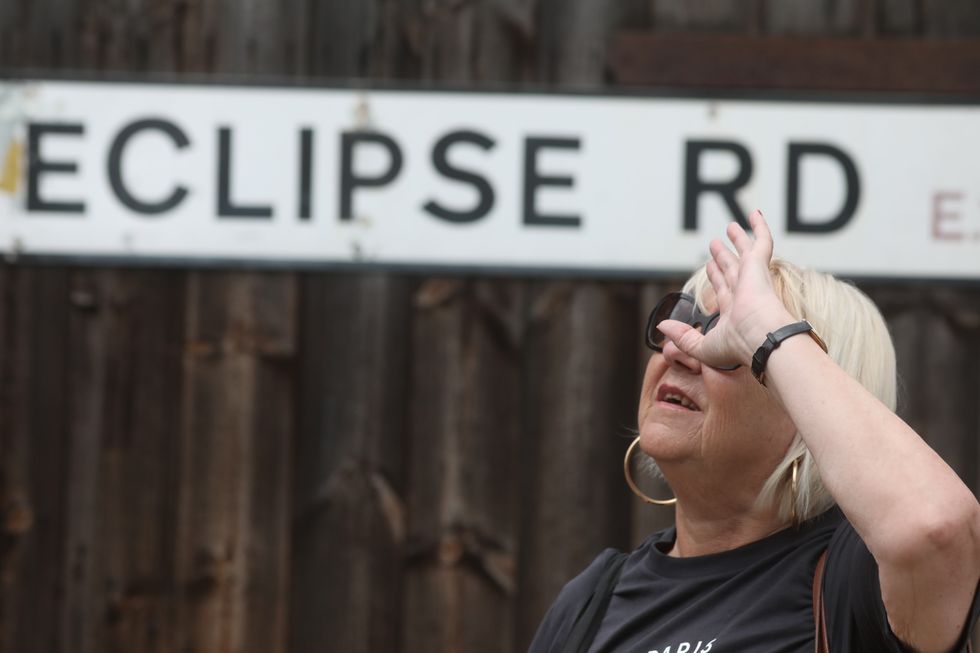
Skygazers across the UK were treated to a rare celestial show on Thursday morning as observers witnessed a crescent sun during a partial solar eclipse.
Despite cloudy skies, astronomy enthusiasts were able to see nearly a third of the sun being blocked out by the moon.
Robert Simpson, 39, from Milton Keynes told the PA news agency: “I love how they (events such as the solar eclipse) make you see the moon and sun in a different way.
“I saw the UK partial eclipse in 2015, and a total eclipse in the US in 2017. So they are rare, but I catch them if I can.”
Paul Galletly, 48, from London, said that clear skies and a higher location allowed him to take good photos of the spectacle.
He said: “Outside my third-floor flat, I stood on the walkway, looked up and glimpsed the eclipse first on my mobile and then tried my luck with the Canon camera and got the shot I wanted.”
Parts of the US, Canada, Europe and Asia witnessed an annular eclipse – where the sun appeared in the sky as a very bright ring, or annulus, in a phenomenon dubbed the “ring of fire”.
Brandon Berkoff, 15, who watched the eclipse from a beach on Long Island, New York, described the event as “beautiful”, saying: “This was the first solar eclipse that I’ve ever seen and it definitely lived up to my expectations.”
He told PA: “I woke up at about 5am and got there right as the sun got above the horizon.
“Once I got my telescope set up and ready it was super-enjoyable to watch it pass through the clouds and take pictures.”
Observers in the UK and Ireland saw a crescent sun instead of a ring, as this was a partial eclipse.
Natalie Ingate, from Chislehurst in south-east London, said she was able to see the eclipse through the cloudy skies.
She told PA: “For me, it felt like a lovely connection, sharing this experience with many people I don’t know – but who share a similar curiosity, to experience this partial eclipse.”
The phenomenon began at 10.08am UK time, reaching maximum coverage at 11.13am, before ending at 12.22pm.
The next partial solar eclipse will take place in October 2022, and will be visible across Europe, north-east Africa, the Middle East and West Asia.
But the next annular eclipse, featuring the ring of fire, is not expected to take place until 2090, with the phenomenon lasting less than four minutes.
















